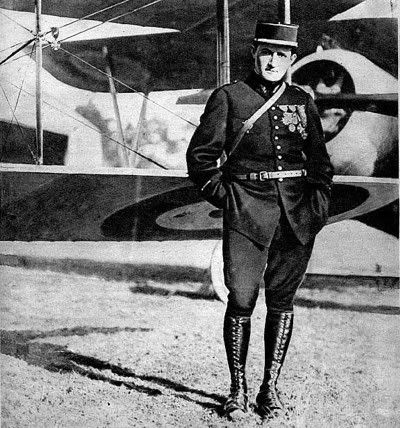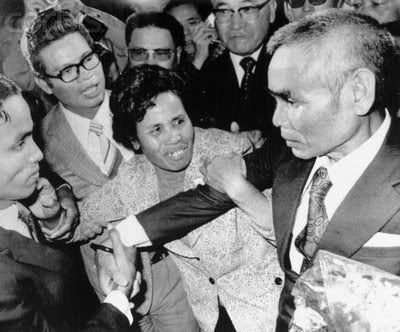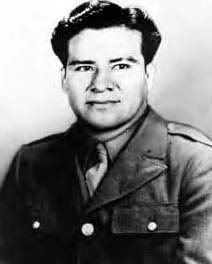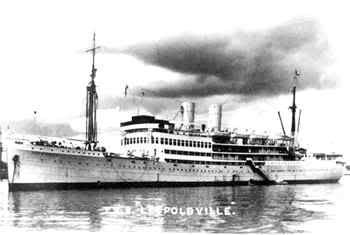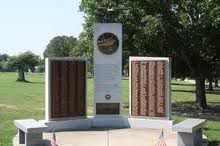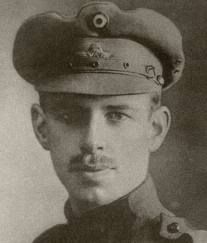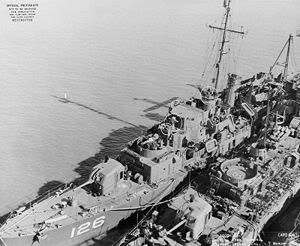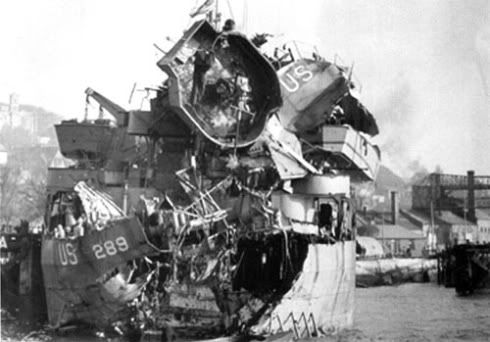- Joined
- Oct 11, 2010
- Messages
- 13,157
- Reaction score
- 8,199
- Age
- 61
Ernest Taylor Pyle (August 3, 1900 – April 18, 1945) was an American journalist who wrote as a roving correspondent for the Scripps Howard newspaper chain from 1935 until his death in combat during World War II. He won the Pulitzer Prize in 1944.
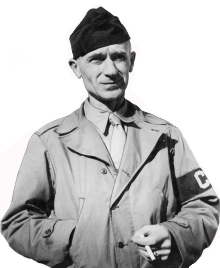
Pyle was born on a tenant farm near Dana, Indiana. When he was almost 18, he joined the United States Navy Reserve. World War I ended soon after, so Pyle served for only three months.
After studying journalism at Indiana University he found work on a small newspaper in La Porte, Indiana. In 1923 he moved to the Washington Daily News and eventually became the paper's managing editor.
In 1932 he was commissioned to write a travel column for the Scripps-Howard newspaper chain. He did this until the outbreak of the Second World War when he became a war correspondent. He moved to England in 1940 where he reported on the Blitz for the New York World Telegram.
Pyle went with the US Army to North Africa in November 1942. This was followed by the invasions of Sicily and Italy. He also accompanied Allied troops during the Normandy landings and witnessed the liberation of France. By 1944 Pyle had established himself as one of the world's outstanding reporters and Time hailed him as "America's most widely read war correspondent."
John Steinbeck commented: "There is, the war of maps and logistics, of campaigns, of ballistics, armies, divisions, and regiments. Then there is the war of homesick, weary, funny, violent, common men, who wash their socks in their helmets, complain about food, whistle at Arab girls, or any other girls for that matter, and lug themselves through as dirty a business as the world has ever seen and do it with humanity and dignity and courage - and that is Ernie Pyle's war."
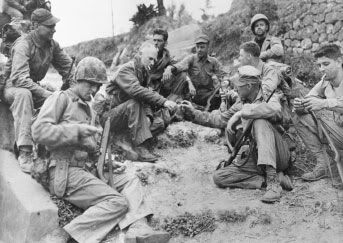
Pyle in Okinawa, 1945
Pyle became disillusioned with the war and wrote to his wife: "Of course I am very sick of the war and would like to leave it, and yet I know I can't. I've been part of the misery and tragedy of it for so long that I feel if I left it, it would be like a soldier deserting."
On April 18, 1945, Pyle died on Ie Shima, an island off Okinawa, after being hit by Japanese machine-gun fire. He was travelling in a jeep with Lieutenant Colonel Joseph B. Coolidge (commanding officer of the 305th Infantry Regiment, 77th Infantry Division) and three other men. The road, which ran parallel to the beach two or three hundred yards inland, had been cleared of mines, and hundreds of vehicles had driven over it. As the vehicle reached a road junction, an enemy machine gun located on a coral ridge about a third of a mile away began firing at them. The men stopped their vehicle and jumped into a ditch. Pyle and Coolidge raised their heads to look around for the others; when they spotted them, Pyle smiled and asked Coolidge "Are you all right?" Those were his last words. The machine gun began shooting again, and Pyle was struck in the left temple (however, the Ernie Pyle State Historic Site in Dana, Indiana, contains a telegram from the Government to Pyle's father stating Pyle was killed by a sniper).The colonel called for a medic, but none were present. It made no difference—Pyle had been killed instantly.
He was buried with his helmet on, laid to rest in a long row of graves among other soldiers, with an infantry private on one side and a combat engineer on the other. At the ten-minute service, the Navy, Marine Corps, and Army were all represented. Pyle was later reburied at the Army cemetery on Okinawa, then moved to the National Memorial Cemetery of the Pacific located in Honolulu. When Okinawa was returned to Japanese control after the war, the Ernie Pyle monument was one of only three American memorials allowed to remain in place. Pyle was among the few American civilians killed during the war to be awarded the Purple Heart.
Pyle is buried at the National Memorial Cemetery of the Pacific at Punchbowl on the island of Oahu, Hawaii. A stone monument was erected on Ie Shima at the site where Pyle was killed. The monument has the form of a truncated pyramid echoing the truncated-triangle shape of the "Statue of Liberty" Division's insignia on the upper facade, with engraved text below: "At this spot the 77th Infantry Division lost a buddy, Ernie Pyle, 18 April 1945."

Pyle was born on a tenant farm near Dana, Indiana. When he was almost 18, he joined the United States Navy Reserve. World War I ended soon after, so Pyle served for only three months.
After studying journalism at Indiana University he found work on a small newspaper in La Porte, Indiana. In 1923 he moved to the Washington Daily News and eventually became the paper's managing editor.
In 1932 he was commissioned to write a travel column for the Scripps-Howard newspaper chain. He did this until the outbreak of the Second World War when he became a war correspondent. He moved to England in 1940 where he reported on the Blitz for the New York World Telegram.
Pyle went with the US Army to North Africa in November 1942. This was followed by the invasions of Sicily and Italy. He also accompanied Allied troops during the Normandy landings and witnessed the liberation of France. By 1944 Pyle had established himself as one of the world's outstanding reporters and Time hailed him as "America's most widely read war correspondent."
John Steinbeck commented: "There is, the war of maps and logistics, of campaigns, of ballistics, armies, divisions, and regiments. Then there is the war of homesick, weary, funny, violent, common men, who wash their socks in their helmets, complain about food, whistle at Arab girls, or any other girls for that matter, and lug themselves through as dirty a business as the world has ever seen and do it with humanity and dignity and courage - and that is Ernie Pyle's war."

Pyle in Okinawa, 1945
Pyle became disillusioned with the war and wrote to his wife: "Of course I am very sick of the war and would like to leave it, and yet I know I can't. I've been part of the misery and tragedy of it for so long that I feel if I left it, it would be like a soldier deserting."
On April 18, 1945, Pyle died on Ie Shima, an island off Okinawa, after being hit by Japanese machine-gun fire. He was travelling in a jeep with Lieutenant Colonel Joseph B. Coolidge (commanding officer of the 305th Infantry Regiment, 77th Infantry Division) and three other men. The road, which ran parallel to the beach two or three hundred yards inland, had been cleared of mines, and hundreds of vehicles had driven over it. As the vehicle reached a road junction, an enemy machine gun located on a coral ridge about a third of a mile away began firing at them. The men stopped their vehicle and jumped into a ditch. Pyle and Coolidge raised their heads to look around for the others; when they spotted them, Pyle smiled and asked Coolidge "Are you all right?" Those were his last words. The machine gun began shooting again, and Pyle was struck in the left temple (however, the Ernie Pyle State Historic Site in Dana, Indiana, contains a telegram from the Government to Pyle's father stating Pyle was killed by a sniper).The colonel called for a medic, but none were present. It made no difference—Pyle had been killed instantly.
He was buried with his helmet on, laid to rest in a long row of graves among other soldiers, with an infantry private on one side and a combat engineer on the other. At the ten-minute service, the Navy, Marine Corps, and Army were all represented. Pyle was later reburied at the Army cemetery on Okinawa, then moved to the National Memorial Cemetery of the Pacific located in Honolulu. When Okinawa was returned to Japanese control after the war, the Ernie Pyle monument was one of only three American memorials allowed to remain in place. Pyle was among the few American civilians killed during the war to be awarded the Purple Heart.
Pyle is buried at the National Memorial Cemetery of the Pacific at Punchbowl on the island of Oahu, Hawaii. A stone monument was erected on Ie Shima at the site where Pyle was killed. The monument has the form of a truncated pyramid echoing the truncated-triangle shape of the "Statue of Liberty" Division's insignia on the upper facade, with engraved text below: "At this spot the 77th Infantry Division lost a buddy, Ernie Pyle, 18 April 1945."










































